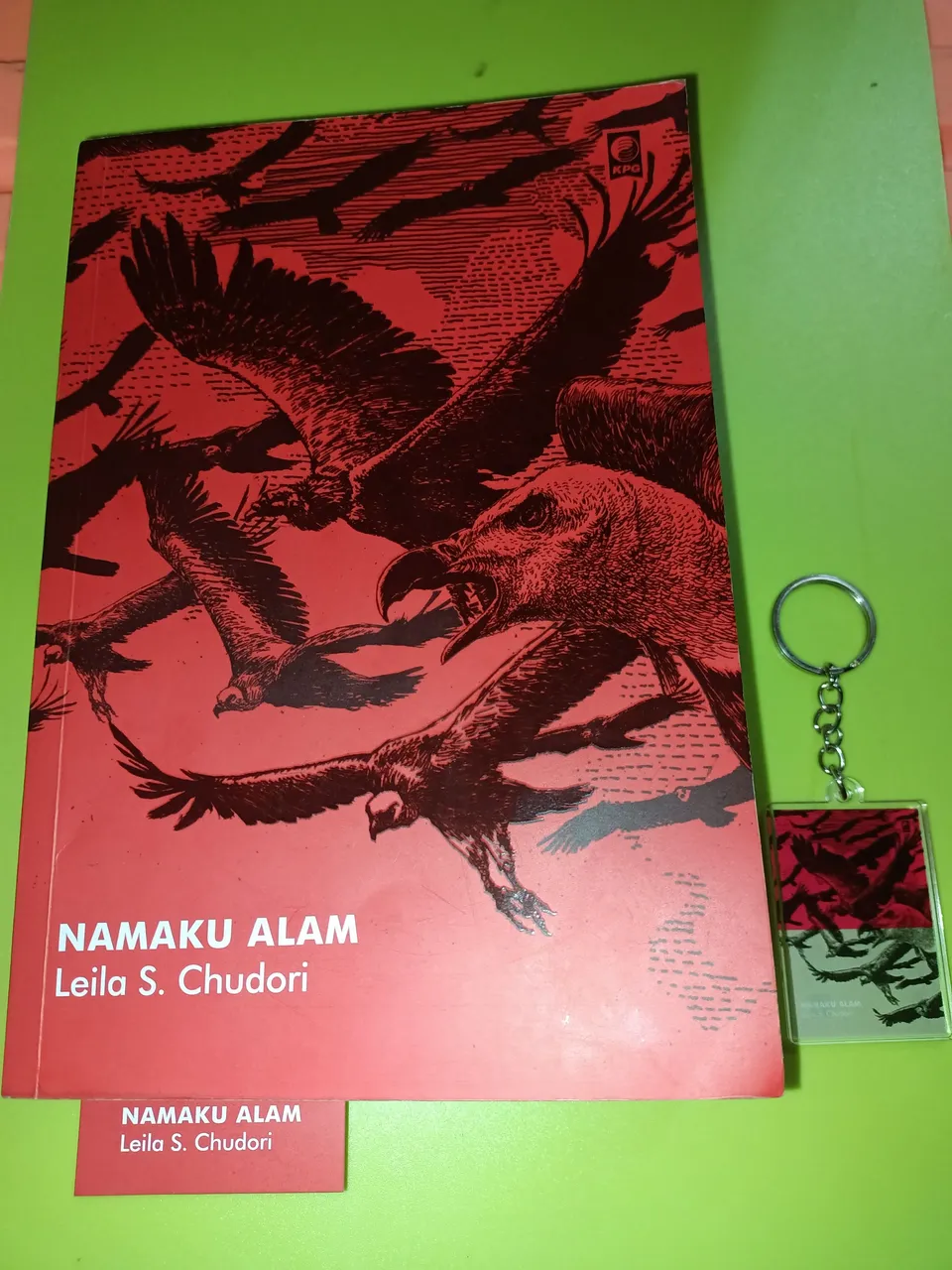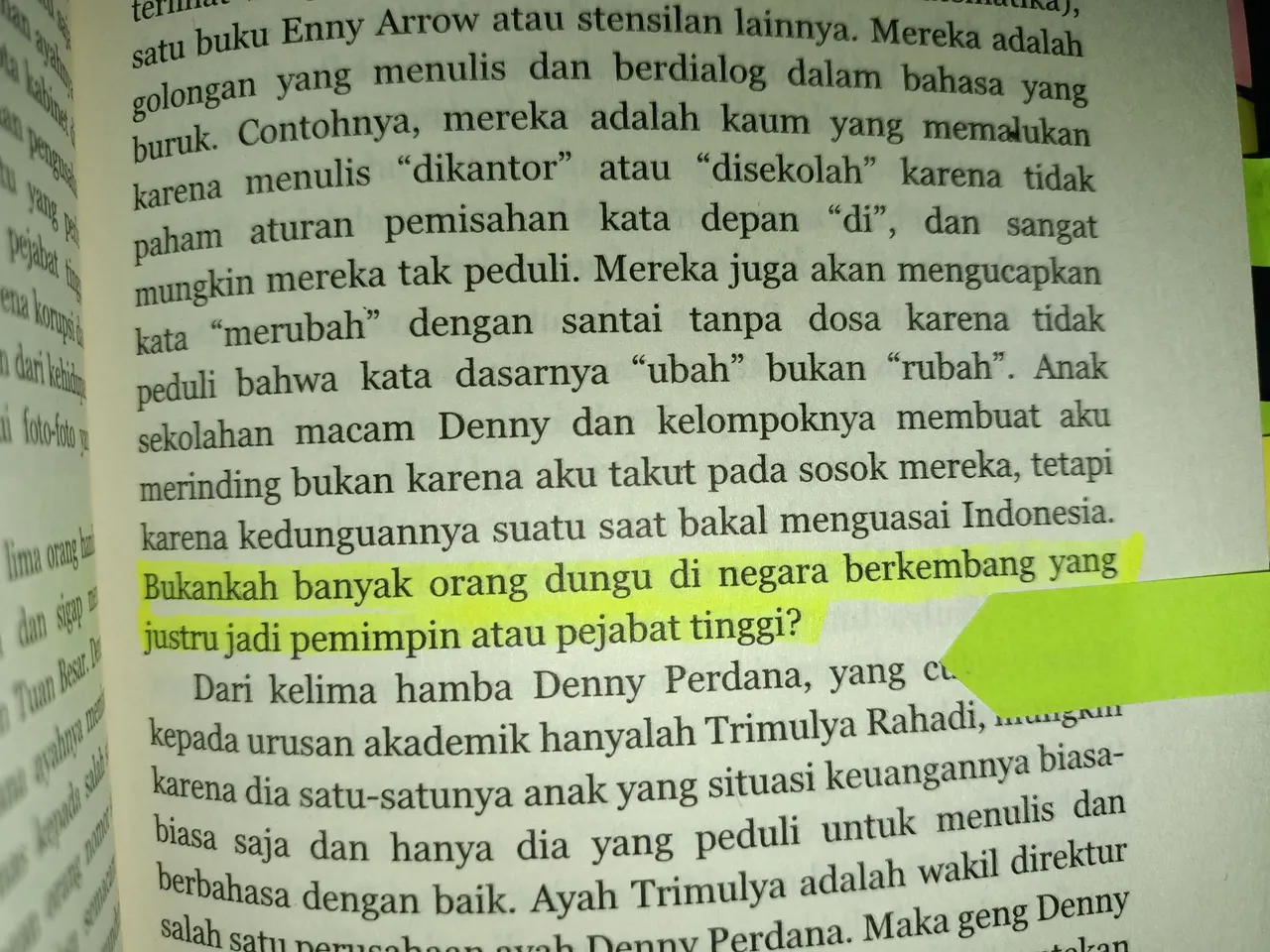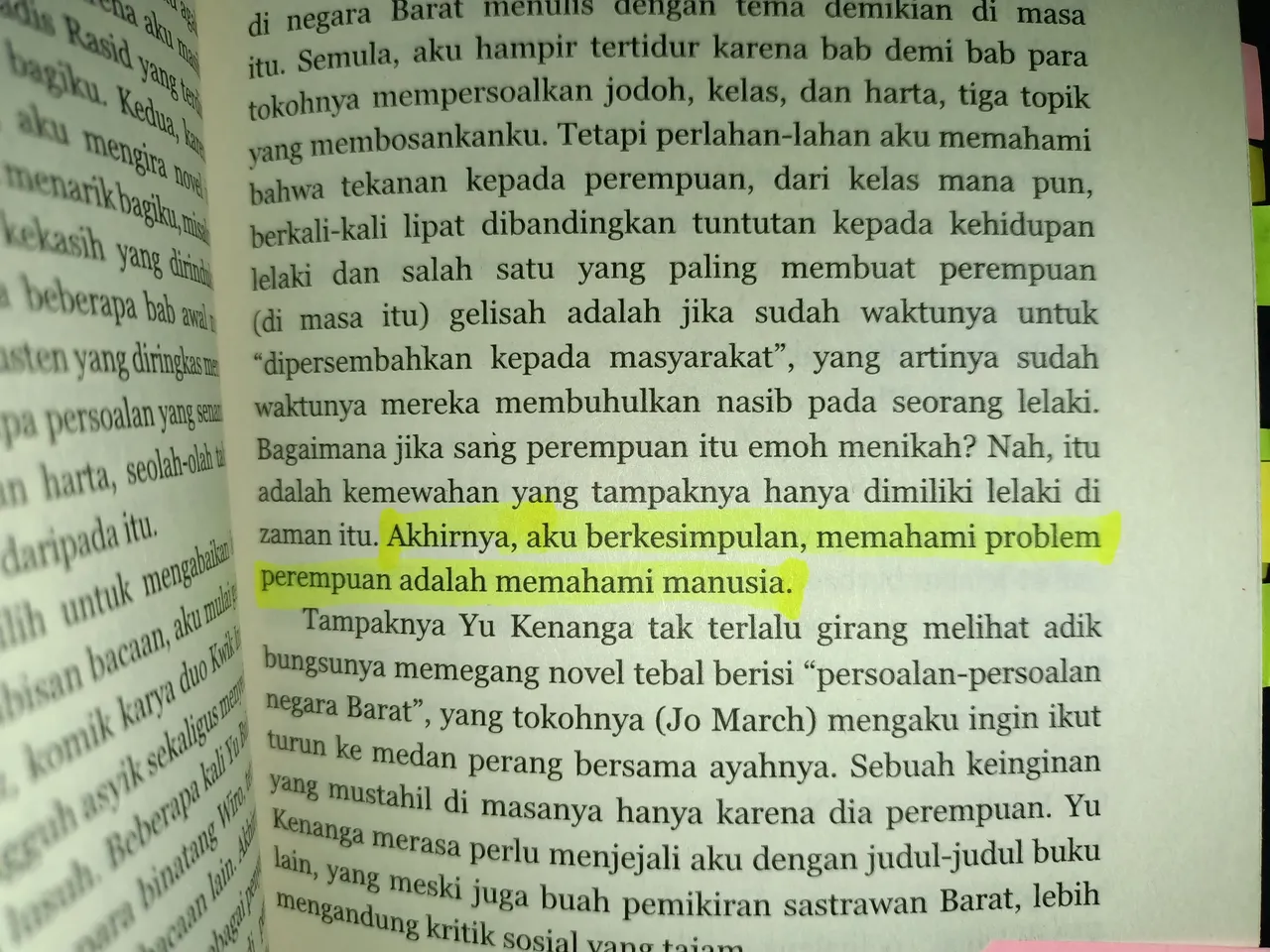Ten years later, which means this year, Leila published a book that is a spin off from Pulang. Titled Namaku Alam.
Unlike Pulang, which centres on the two central characters Dimas Suryo and his only daughter Lintang Utara, Namaku Alam centres on Segara Alam. In the Pulang book, Segara Alam does have its own portion, although not as much as Lintang and Dimas, apparently it invites the reaction of readers (including me) so that in the future the author makes his own book about Segara Alam. And... well... here we are.
NAMAKU ALAM

Segara Alam. The youngest son of a political prisoner named Hananto Prawiro, who is now 33 years old, revisits his childhood memories. Memories of the many unpleasant things that happened in his home, especially after the departure of his father who was suspected of being a communist sympathiser. So, after the inevitable chaos, his mother urged Alam, and his two older sisters, Yu Kenanga and Yu Bulan, to keep a low profile and to keep their heads down as much as possible. This was to prevent them from being subjected to Bersih Diri or Bersih Lingkungan (a term used by the New Order regime to prevent the state apparatus from being associated with communism).
.
While children of Alam's age were free to play outside with their peers, Alam had to play with his maternal cousins who were the children of elite aristocrat families. Alam was gifted with a photographic memory that made him an outstanding achiever due to his sharp memory and rare misses. However, for Alam, this is more like a curse, because his memory is too sharp, some painful memories cannot be suppressed.

The story progresses smoothly from young Alam to teenage, temperamental Alam, as well as his two older sisters who, although different in character, both have excellent personality traits. Yu Kenanga, the eldest daughter, is more reserved and restrictive, but is an avid activist who attends demonstrations to protest against the country's dictatorial rulers. Yu Kenangan grew into a smart and critical teenager. The second child of Surti Anandari and Hananto Prawiro was named Bulan, or Yu Bulan. For Segara Alam, Yu Bulan gets along more easily with her friends, and even has a friendship gang at school.

Raising the Issue of 1965 and the Polemics over History Keepers
Indonesia has a dark history of massive human rights violations that occurred during the reign of two regimes: the New Order and the Old Order. In this novel, the focus is on the human rights violations that occurred at the end of the old order government in 1965, popularly known as the G-30-S (30 September Movement), which killed six generals. However, after the coup of the old order rulers and replaced by the new order after the Order of the Eleventh of March (SUPERSEMAR) led by Soeharto, the order for the elimination of communist party members and their underbosses was launched blindly. They were, by order of the new order, to be finished off. Men from the families of suspected sympathisers would be arrested and ‘disappeared’ without trial. Meanwhile, the wives were arrested and then interrogated and locked up in a headquarters. Not only that, these women were sexually harassed as experienced by the character Surti Anandari.
Leila as a writer can certainly write these dark events in a fiction-history like Namaku Alam. In addition to library research, Leila also conducted field research and was assisted by her own memories as a boomer-era field journalist.
The traumatic portrayal of a political prisoner's family is clearly depicted in the daily life of Surti Anandari's family, as well as the ostracisation and mockery of the ‘family of State Traitors’ that has not yet found a bright spot. Leila took this opportunity to include a chapter on the chroniclers of history in the story as a way to make the current generation more aware and concerned about history, the truth of which is always changing depending on the regime in power.
BULLYING IN SCHOOL
Bullying in the school area may be something that never gets resolved. The novel Namaku Alam does not escape this problem. It is true that most of the causes of bullying, especially in school institutions, are due to the social gap between students.
In Namaku Alam, a male gang member at school feels very powerful because the student's parents are regular donors to the school. This causes an unrealised hierarchy between students. The donor's son feels powerful and superior.
Another case, also experienced by Segara Alam who was bullied by his cousin Irwan. Irwan continued to disturb Alam's peace with taunts about Alam's father who was labelled a ‘traitor to the country’.
INTERPRTATION
Namaku Alam is an example of a book in the historical-fiction genre that has many uniquenesses. Apart from the important issues of the country's history as well as the social issues of bullying and sexual harassment, this book also gives a new hope to the current and next generation to be more enamoured with the History of their own country. The most heart-pounding point is the author's utopian image of a private high school called PUTRA NUSA. For me personally, Putra Nusa is also the ideal school that I dream of. The lack of social inequality especially in the economic aspect, there is no gap between social science and science like in today's schools that make science students feel superior to social and literature students. All students have equal opportunities to fulfil their interests and talents in the extracurricular activities provided at Putra Nusa school. What struck me most about this ideal school is that all students are taught to manage critical thinking well. Although all aspects of Putra Nusa school are too good to be true, however, I feel inspired by the author's imagery.
SUMMARY
It turns out I've talked quite a lot about this book, which shows how enthusiastic I am about Leila S. Chudori's latest work. And for now, whenever my friends ask me what books I recommend to read, I always without hesitation recommend this book and Leila's other books. It's worth reading!

Hi, I am the child of the universe, I like to read books with various genres. I was born in the city of batik but can't draw batik yet. I want to be a novelist, but my works are only short poems that are included in anthology books.
please share my content if you feel my content is good for everyone to read. Thank you. Let's be friends!